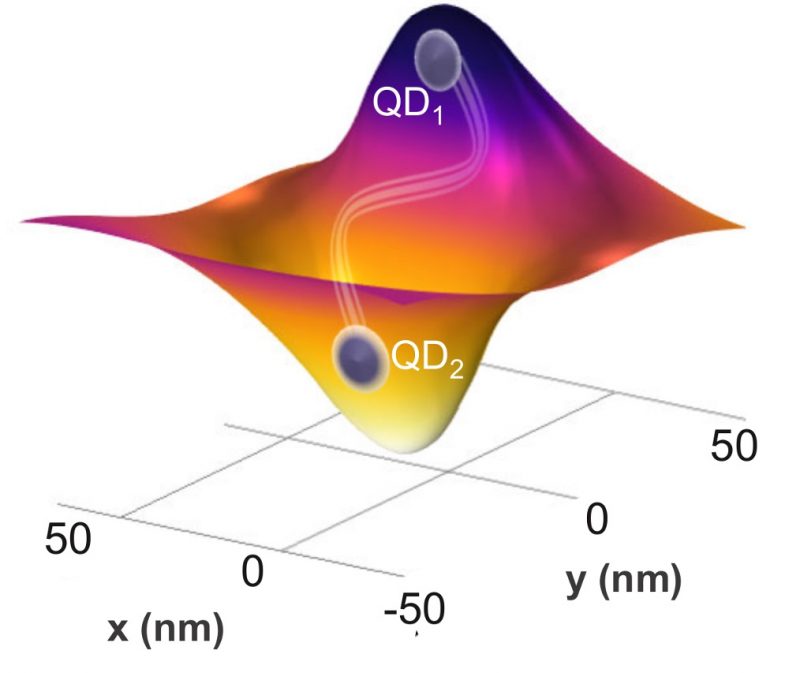Scientists make single photon Quantum dot emitters

Device allows for controllable, directional emission of single photons to produce entangled states of pairs of quantum dots
Researchers at CRANN and the School of Physics at Trinity College Dublin have created an innovative new device that will emit single photons from quantum dots. Achieving this, they say, is key to making practical quantum computers, quantum communications, and other quantum devices.
The development is a significant improvement on previous designs in photonic systems as it allows for controllable, directional emission of single photons to produce entangled states of pairs of quantum dots.
Qubits and the promise of quantum computing
The promise of quantum computers is based on using quantum bits - 'qubits' - to execute computations. Unlike information bits that are either 0s or 1s, qubits can be 0 and 1 simultaneously.
Scientists are exploring different options and designs to make quantum computing a viable reality. One proposed idea uses photonic systems. The Trinity team explores such a system in their recently published paper in the journal Nano Letters. Their system utilises single photons of light emitted in a controlled fashion in time and space from compound semiconductor quantum dots.
Quantum entanglement is a fundamental property of quantum mechanics and occurs when a pair or group of particles are quantum-mechanically linked in a way such that the quantum state of each particle of the pair cannot be described independently of the state of the others. Essentially, two entangled quantum dots can emit entangled photons.
John Donegan, professor at CRANN and Trinity's School of Physics, said: "The device works by placing a metal tip within a few nanometers of a surface containing the quantum dots. The tip is excited by light and produces an electric field of such enormous intensity that it can greatly increase the number of single photons emitted by the dots. This strong field can also couple emission from pairs of quantum dots, entangling their states in a way that is unique to quantum emitters of light."
The other significant advantage is the mechanism by which the device works over current state-of-art photonic devices for quantum computing applications.
Ortwin Hess, professor of Quantum Nanophotonics in Trinity's School of Physics and CRANN, added: "By scanning the metal tip over the surface containing the quantum dots, we can generate the single photon emission as required. Such a device is much simpler than current systems that attempt to fix a metal tip, or a cavity, in close proximity to a quantum dot. We now expect that this device and its operation will have a striking effect on research in quantum emitters for quantum technologies."
The collaboration between Hess and Donegan began while Hess was at Imperial College London and will continue with his recent appointment to Trinity through the SFI Research ship Programme.
The team plans to fabricate devices that will demonstrate controlled single photon emission and contribute strongly to the research effort in quantum technologies in Ireland.



































